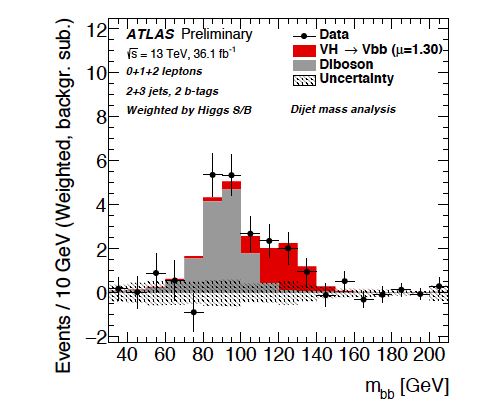ATLAS experiment reveals further Higgs boson evidence

Almost exactly on the 5 year anniversary of the discovery of the Higgs boson, a further piece in the puzzle is uncovered at the Large Hadron Collidor (LHC). Today, new results presented by the ATLAS experiment at the prestigious bi-annual High-Energy Physics conference of the European Physical Society provide the first evidence that the Higgs boson couples to beauty quarks. The new result is a major milestone in a long term programme to verify that all particles get their mass from the Higgs boson.
By analysing billions of collisions recorded by the ATLAS experiments, Dr Andrew Mehta from the University of Liverpool , together with scientists from around the world, extracted evidence that Higgs boson produced at the LHC can decay to a pair of beauty-quarks. This confirms that the Higgs boson behaves as was predicted, by Peter Higgs and others more than 50 years ago, giving mass to quarks.
Although the decay to beauty-quarks is the most common, distinguishing such events from amongst a huge background has been exceedingly difficult. The new results are particularly significant as they make it much less likely that the Higgs boson also decays to unseen particles that would offer a solution for the mysterious missing dark matter that we know makes up a large fraction of the Universe.
Today, the Liverpool group is heavily involved with the planned upgrade of the ATLAS experiment. The group designed and now starts to build new silicon detectors, which have a precision of a few thousandths of a millimetre. These will identify beauty quarks with greater accuracy and do this at higher collision rates than is possible today. This in turn will allow us to measure the coupling of the Higgs to beauty quarks and other particles with a few percent precision. Deviations from the predictions would prove the existence of hitherto undiscovered particles or forces.
